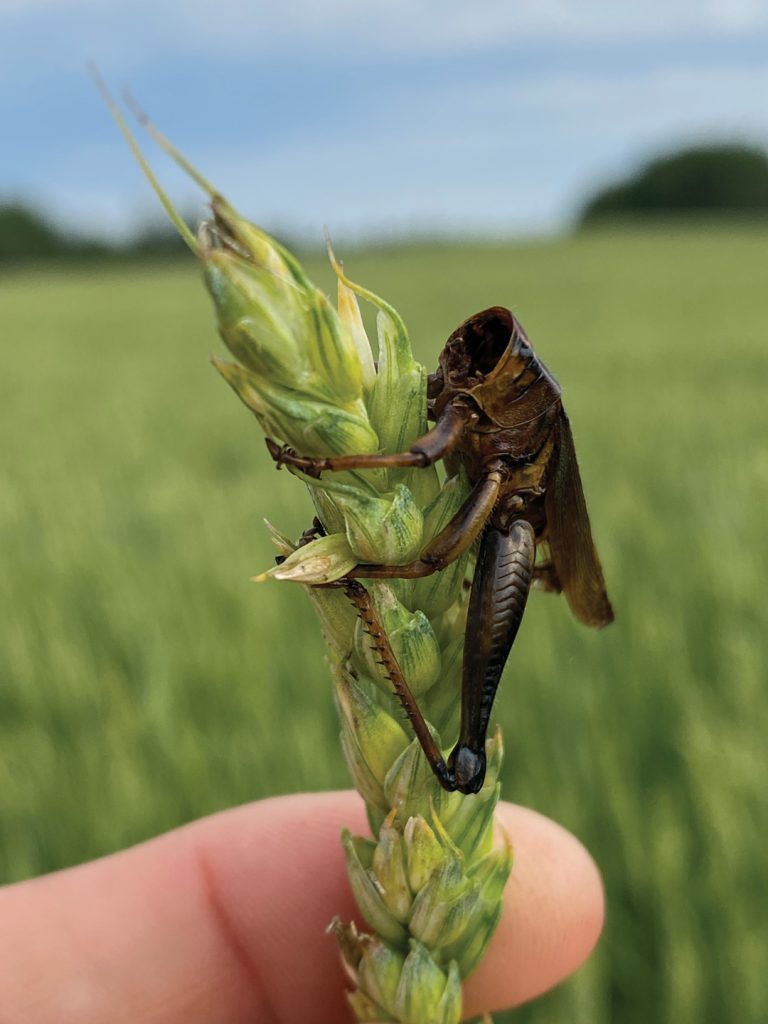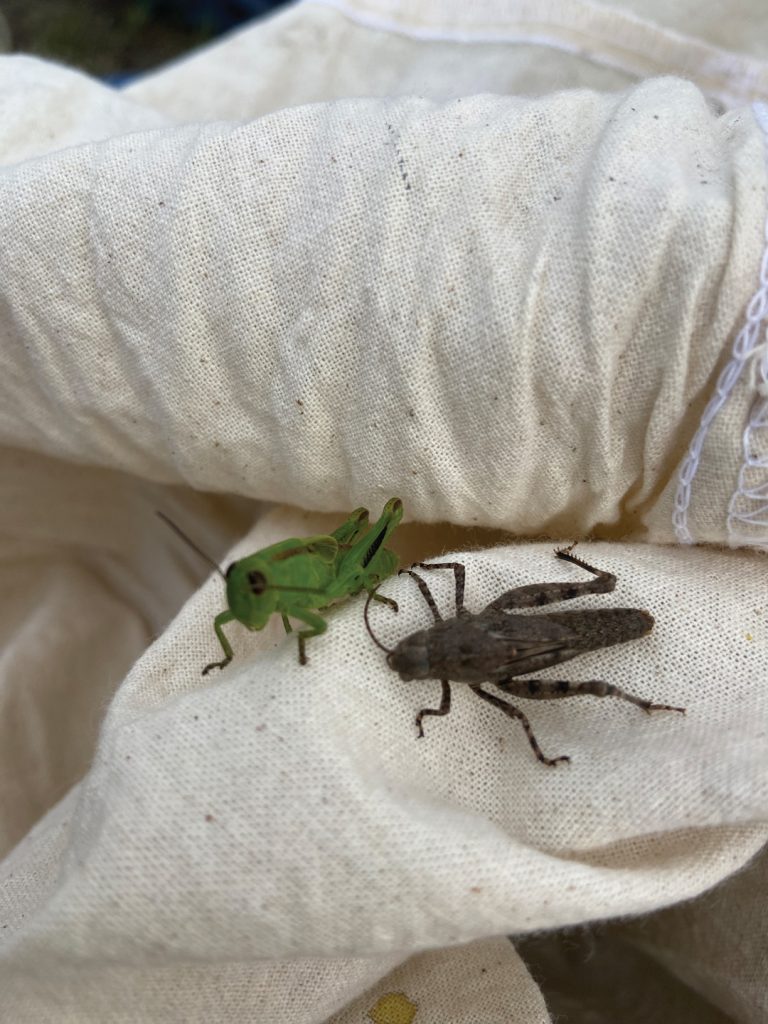EERIE PEST CONTROL
Entomophaga grylli is a stealthy Prairie pathogen that preys on grasshoppers in horror movie style. Can its deadly power be harnessed as a bio-pesticide?

Entomophaga grylli is a stealthy Prairie pathogen that preys on grasshoppers in horror movie style. Can its deadly power be harnessed as a bio-pesticide?

For 27 years, farmers and entomologists have co-operated to record insect data for the Prairie Pest Monitoring Network (PPMN). This has produced a unique scientific resource not available in other parts of the world, said Meghan Vankosky, Agriculture and Agri-Food Canada entomology research scientist and PPMN co-chair. Her peers in countries such as Australia have not surveyed the ebbs and flows of insect populations as widely or for as long as the PPMN. “Having so much information from such a huge geographical area over such a long period of time is very unique from what I understand,” she said.

Those orange and red, blob-like areas on insect survey maps are a farmer’s cue to action. Fields seeded with certain crops and located in and around these hotspots may require individual assessment and population control. Among cereal farmers, the most anticipated of these maps are those for grasshoppers, wheat stem sawfly and wheat midge.

One of the largest bug resources in the world is located right here in our backyard. Agriculture and Agri-Food Canada (AAFC) maintains the Canadian National Collection (CNC) of Insects, Arachnids and Nematodes. Located at the Ottawa Research and Development Centre Central Experimental Farm in Ottawa, ON, the facility serves agricultural research in a number of key areas.

From weevils to midges, beetles to spiders, professor and entomologist Boyd Mori examines the secret
life of bugs. He leads a team of researchers with the University of Alberta’s Agricultural and Ecological
Entomology Group. Focused on integrated pest management, the team analyzes the inner workings of
insect ecosystems. This burgeoning area of study focuses on the battles between pests and beneficial
insects within agriculture.

Alberta Wheat Commission (AWC), Alberta Barley, Alberta Pulse Growers and Alberta Canola Producers have teamed up
with the university and Western Grains Research Foundation (WGRF) to fund positions in agricultural entomology, soil health and a third chair now in development, the details of which have not been announced. Once candidates are hired, matching funding will be sought from the Natural Sciences and Engineering Research Council of Canada.